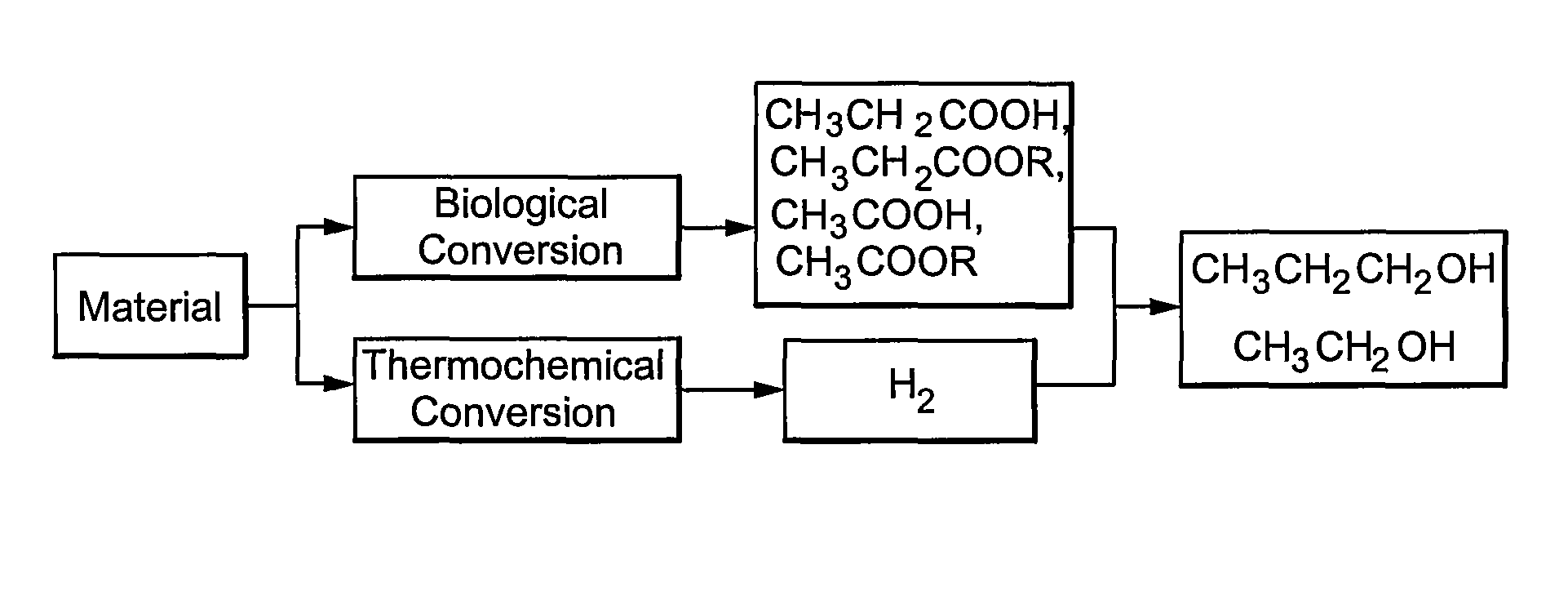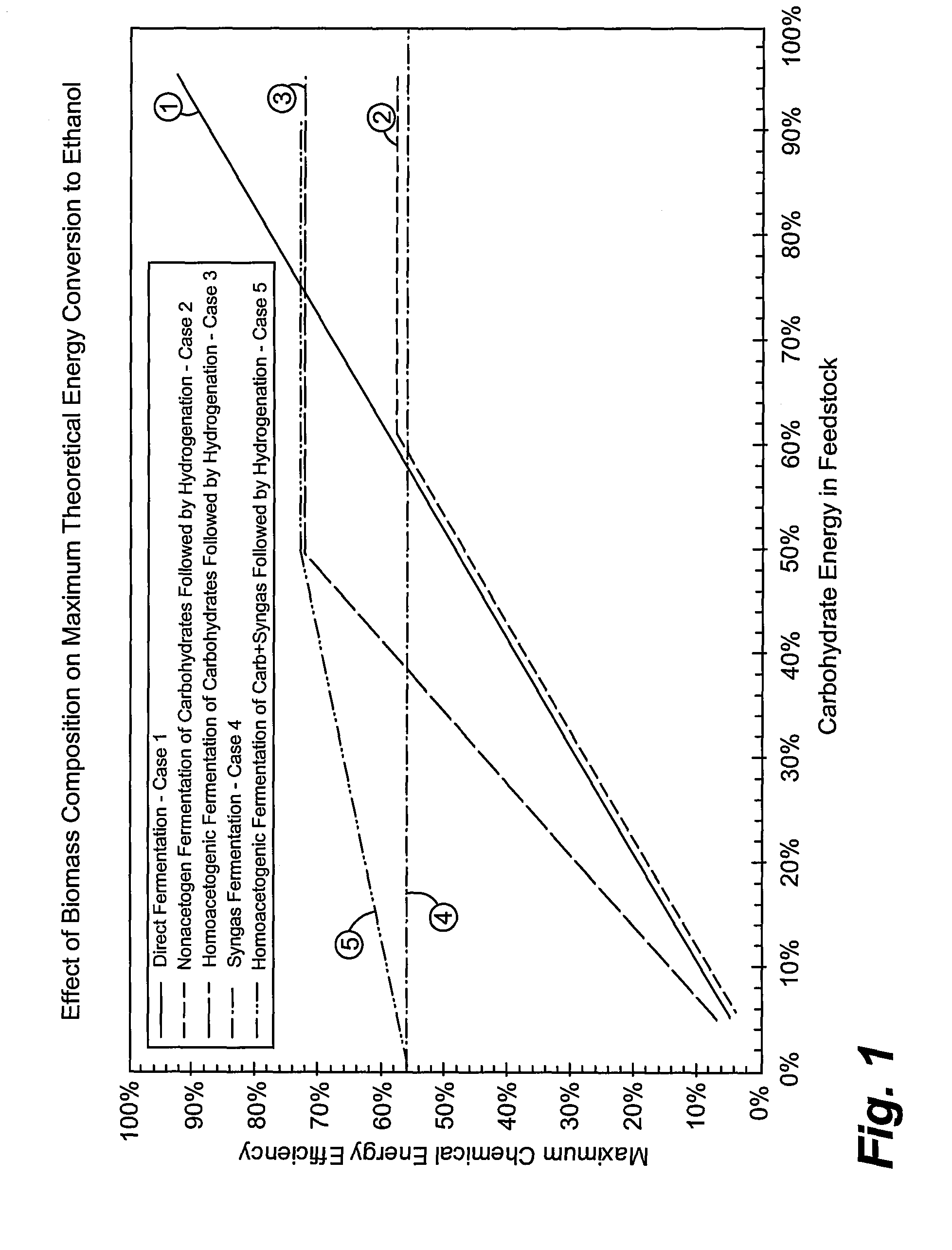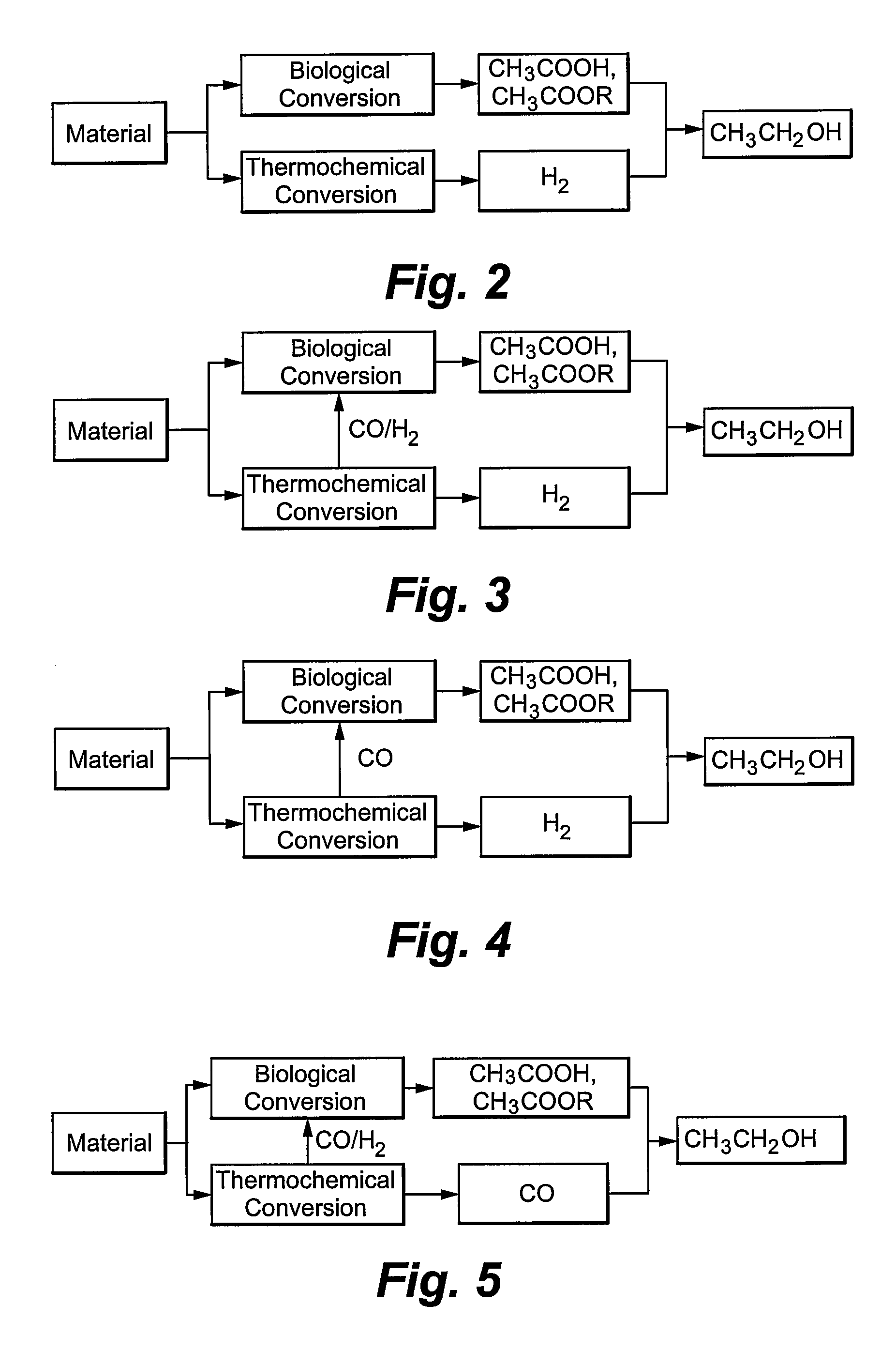Method of making propanol and ethanol from plant material by biological conversion and gasification
a technology of biological conversion and gasification, applied in the direction of biofuels, waste based fuels, fermentation, etc., can solve the problems of low carbon efficiency, inefficient transfer of current processes that use biomass, and insufficient efficiency of conversion of biomass into ethanol, etc., to achieve greater chemical energy efficiency, chemical energy efficiency, and chemical energy efficiency
- Summary
- Abstract
- Description
- Claims
- Application Information
AI Technical Summary
Benefits of technology
Problems solved by technology
Method used
Image
Examples
case 1
[0077 is the direct fermentation of a starting material. The yield of ethanol is directly proportional to the amount of carbohydrate present in the feed. This case is always carbohydrate carbon limited and produces high maximum theoretical yields only when the feedstock has very high carbohydrate content.
case 2
[0078 is the non-acetogenic fermentation of carbohydrates to acetate followed by hydrogenation to produce ethanol. In this case, two moles of acetate are produced per mole of glucose fermented. For feedstock carbohydrate energy levels below about 60%, there is enough residual energy in the non-carbohydrate fraction to provide the hydrogen needed for hydrogenation. In this case, the system is carbohydrate carbon limited and the net production is two moles of ethanol per mole of glucose in the feed, the same as direct fermentation. At feedstock carbohydrate levels above about 60%, there is not enough energy in the non-carbohydrate fraction to provide the hydrogen needed for hydrogenation unless some of the carbohydrate is gasified as well. In this case, the system is energy limited and the overall chemical energy efficiency is about 58%.
case 3
[0079 is the homoacetogenic fermentation of carbohydrates to acetate followed by hydrogenation to produce ethanol. As in Case 2, the system can either be carbohydrate carbon limited or energy limited. The break point occurs at about 50% for the assumptions used in the calculations. This case always has a higher maximum theoretical yield compared to Case 2. The maximum theoretical yield is also higher when compared to Case 1 for feedstocks containing less than about 75% of their energy in the form of carbohydrates. Case 3 exemplifies many of the embodiments disclosed herein.
PUM
| Property | Measurement | Unit |
|---|---|---|
| temperature | aaaaa | aaaaa |
| weight | aaaaa | aaaaa |
| chemical energy efficiency | aaaaa | aaaaa |
Abstract
Description
Claims
Application Information
 Login to View More
Login to View More - R&D
- Intellectual Property
- Life Sciences
- Materials
- Tech Scout
- Unparalleled Data Quality
- Higher Quality Content
- 60% Fewer Hallucinations
Browse by: Latest US Patents, China's latest patents, Technical Efficacy Thesaurus, Application Domain, Technology Topic, Popular Technical Reports.
© 2025 PatSnap. All rights reserved.Legal|Privacy policy|Modern Slavery Act Transparency Statement|Sitemap|About US| Contact US: help@patsnap.com



